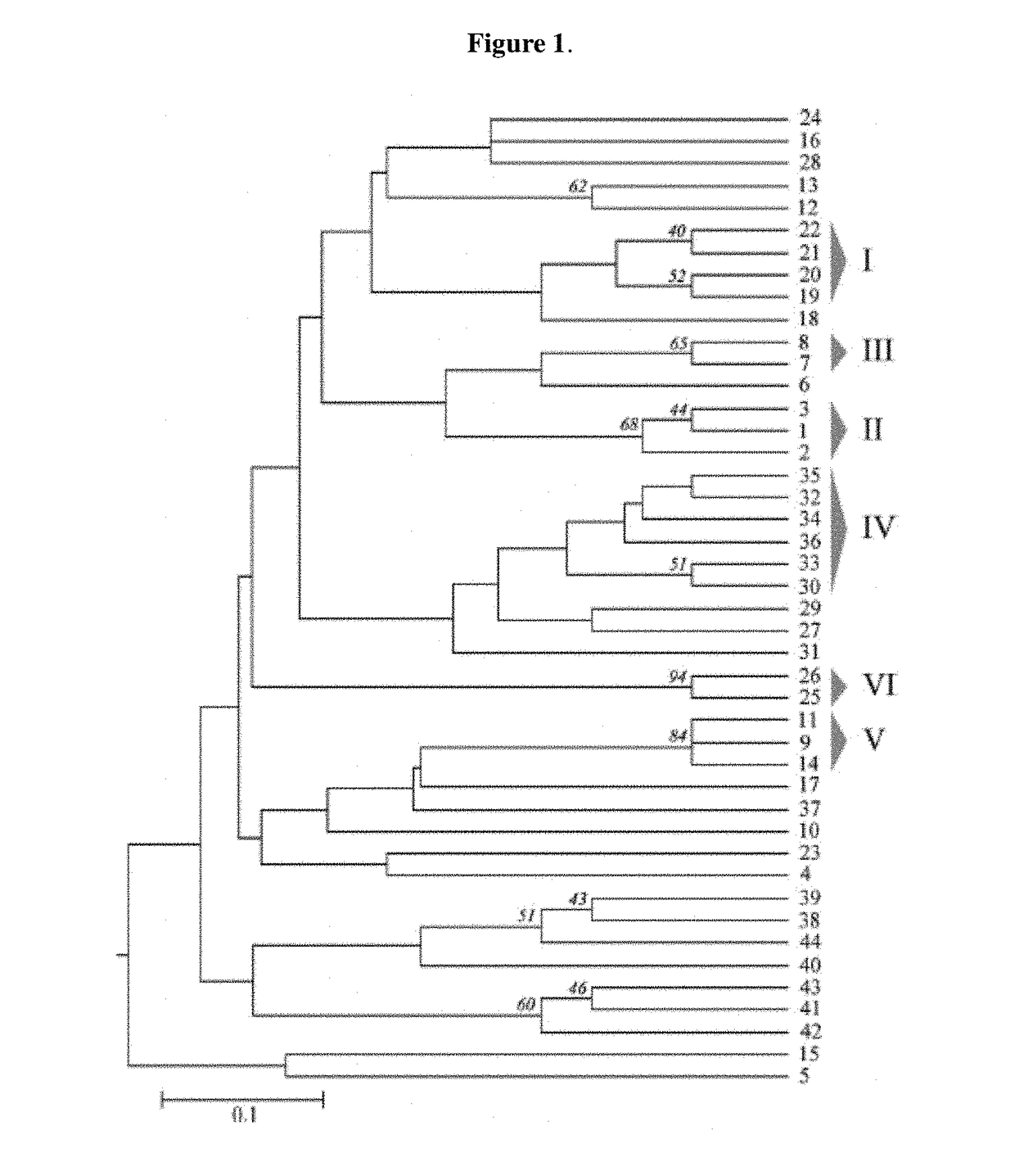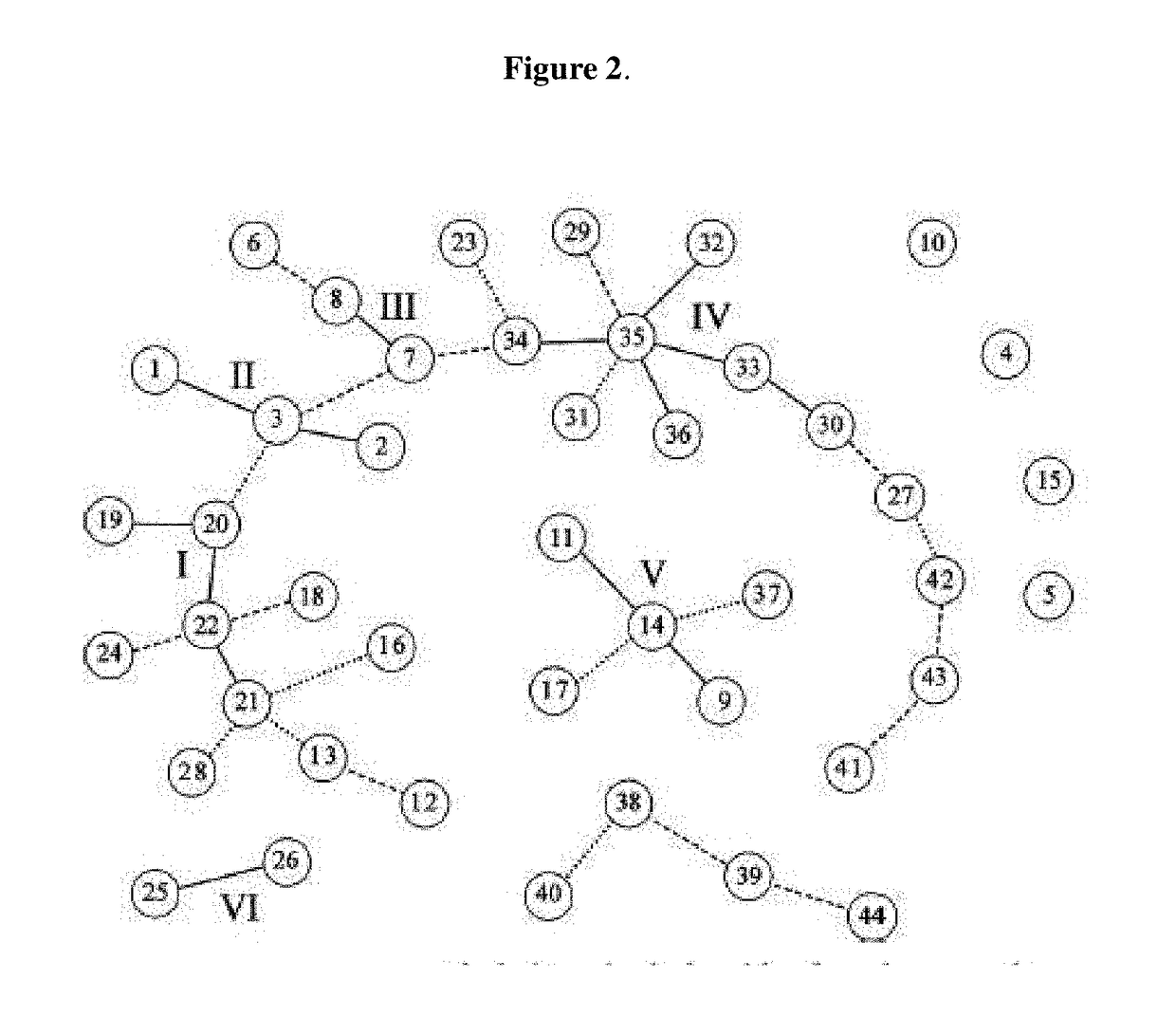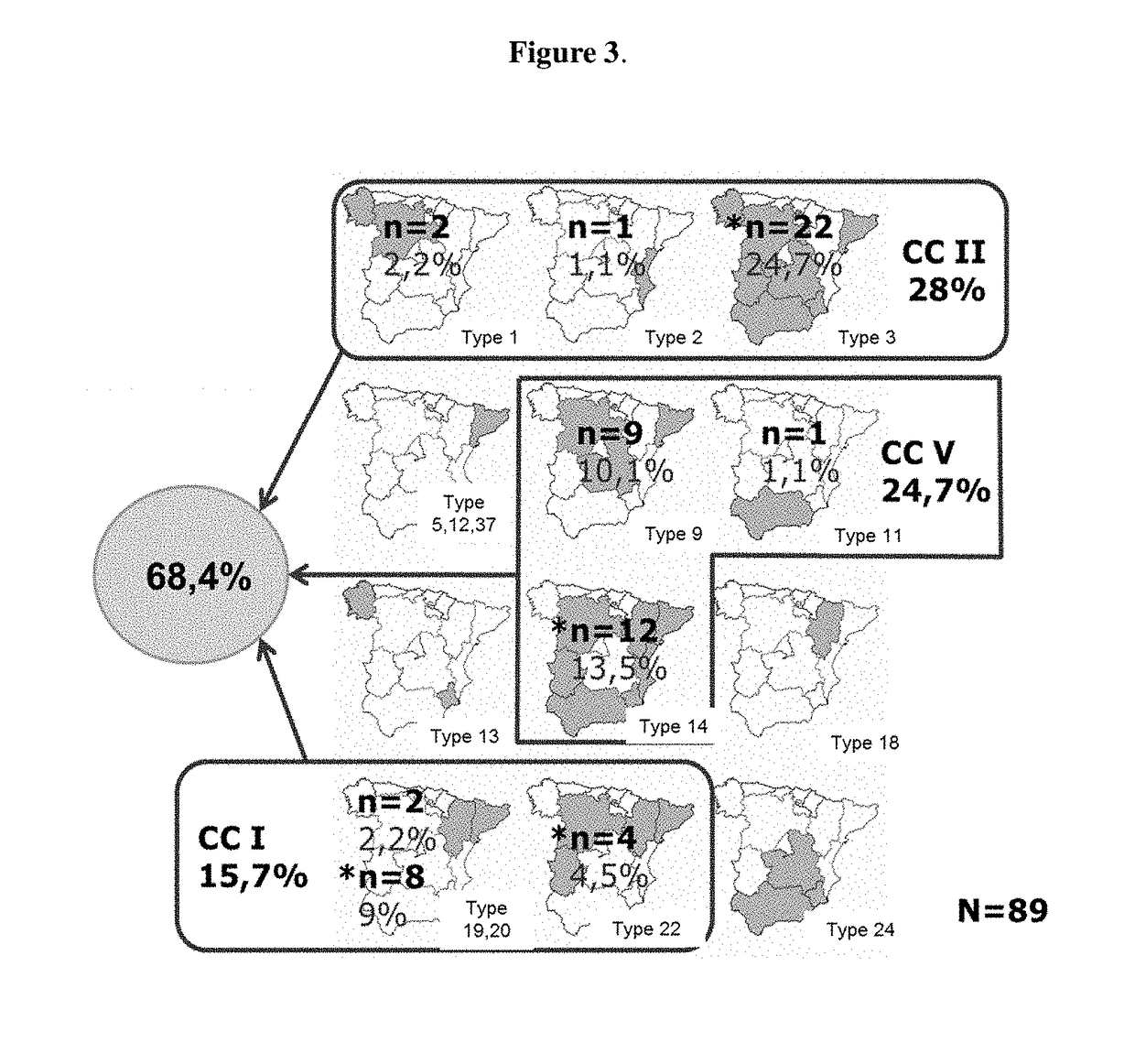Swine dysentery vaccine
a swine dysentery and vaccine technology, applied in the field of composition, can solve the problems of not providing adequate cross-protective immunity against strains of different mlva strains, types, clonal complexes, etc., and achieve the effects of reducing the overall severity of swine dysentery, preventing and/or reducing the time of shedding, and preventing and/or delaying clinical signs
- Summary
- Abstract
- Description
- Claims
- Application Information
AI Technical Summary
Benefits of technology
Problems solved by technology
Method used
Image
Examples
example 1
Multiple-Locus Variable-Number Tandem-Repeat Analysis of Brachyspira hyodysenteriae
[0200]MVLA Analysis
[0201]A set of 172 porcine B. hyodysenteriae isolates and strains was used in this study, including the three reference strains B204R (ATCC 31212), B234R (ATCC 31287) and WA1R (ATCC 49526) and the type strain B78T (ATCC 27164).
[0202]Duplicates of the B204R and B78T strains were obtained from the bacterial collections held at the University of Leon and Murdoch University. The strains and field isolates were from Spain (n=115), Australia (n=36), Canada (n=3), the United States (n=7), the United Kingdom (n=4), and Netherlands (n=7) and had been recovered from the 1970s to 2009. Twenty-three isolates were recovered from Iberian pigs, a local Spanish breed. These pigs contribute to the preservation of the “dehesa,” a specific Mediterranean ecosystem located in the western regions of the country (Castilla y León, Extremadura, and Andalucia), where they are traditionally reared in extensi...
example 2
Selection and Culture of the Universal Vaccine Strains
[0225]Three Brachyspira hyodysenteriae strains were selected, each of which belongs to different clonal complexes (clonal complexes I, II and V). Each genetically diverse selected strain belongs to the ancestral type from each clonal complex. Moreover, each selected strain is at least 1% detected with respect to the total of detected strains in Spain (FIG. 3). The strains are the ones deposited within the Collection Nationale de Cultures de Microorganismes (CNCM), Institut Pasteur, on Mar. 14, 2013, with registration numbers CNCM I-4720, CNCM I-4721 and CNCM I-4722.
[0226]The strain with registration number CNCM I-4720 belongs to clonal complex II. The strain with registration number CNCM I-4721 belongs to clonal complex V. The strain with registration number CNCM I-4722 belongs to clonal complex I.
[0227]CNCM I-4720 is 24,7% detected with respect to the total of detected strains in Iberian Peninsula Spanish territory. CNCM I-4721 ...
example 3
Inactivation of the Bacteria
[0230]After fermentation, 4 L (approx.) of culture are pumped into a sterile flask and centrifuged (2×7000 rpm, 10 minutes). Resulting pellets are suspended in 1 L sodium acetate buffer 0.1 M. The inactivation of the culture is carried out with an injection of formaldehyde at 0.5% and incubation during 24 hours at 37° C. with light agitation (50 rpm). Next day the suspension is centrifuged and resuspended in sterile sodium acetate 0.1 M. The antigen (109-1010 bacteria / mL, approx.) is kept at 4° C. until mixing with adjuvant and excipients for vaccine manufacturing.
PUM
| Property | Measurement | Unit |
|---|---|---|
| Volume | aaaaa | aaaaa |
| Volume | aaaaa | aaaaa |
| Temperature | aaaaa | aaaaa |
Abstract
Description
Claims
Application Information
 Login to View More
Login to View More - R&D
- Intellectual Property
- Life Sciences
- Materials
- Tech Scout
- Unparalleled Data Quality
- Higher Quality Content
- 60% Fewer Hallucinations
Browse by: Latest US Patents, China's latest patents, Technical Efficacy Thesaurus, Application Domain, Technology Topic, Popular Technical Reports.
© 2025 PatSnap. All rights reserved.Legal|Privacy policy|Modern Slavery Act Transparency Statement|Sitemap|About US| Contact US: help@patsnap.com



